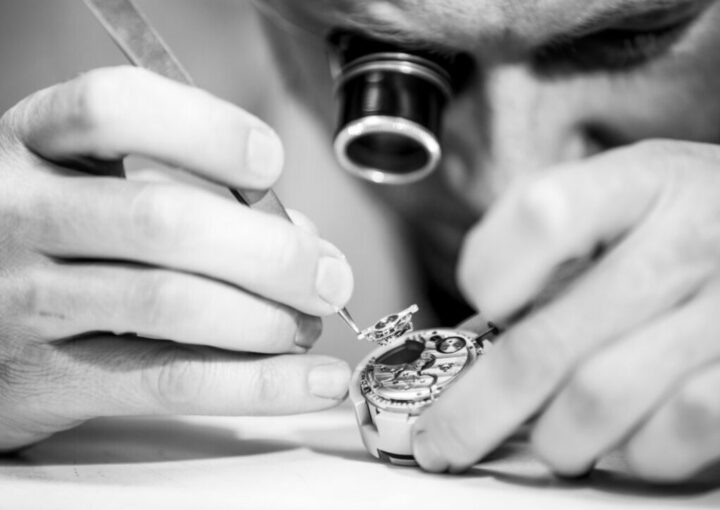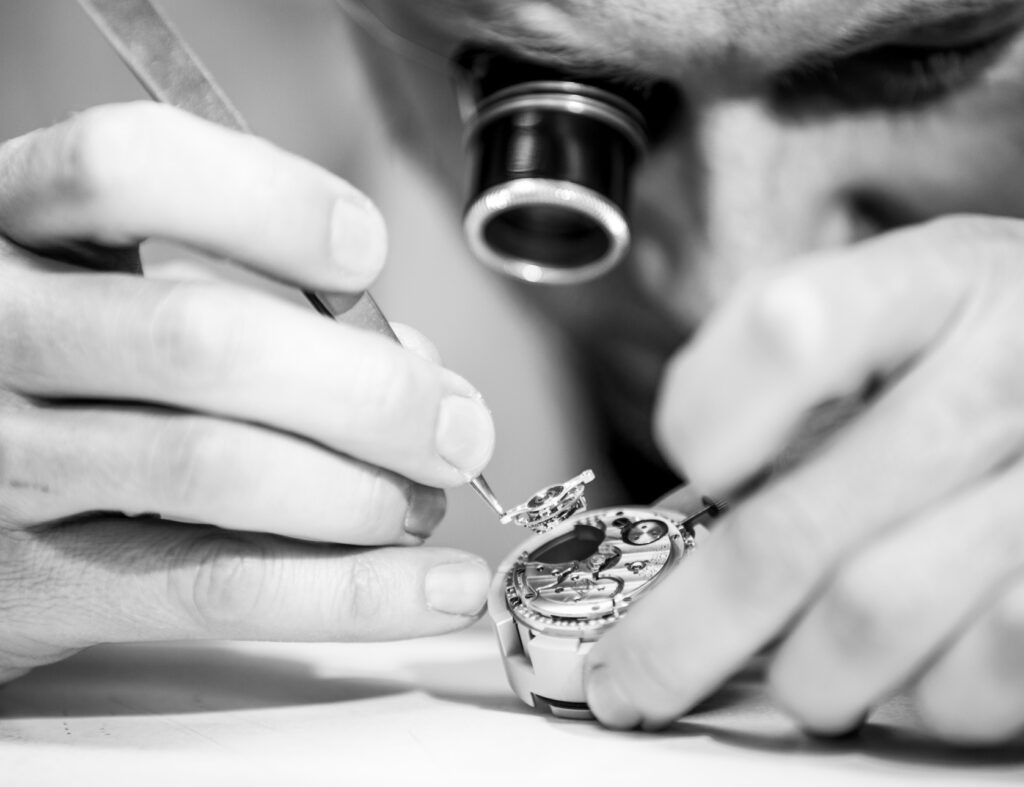Deep dive: exploring H. Moser & Cie.’s water-resistant timepieces
Water and watches: two elements that historically didn’t mix. Yet, in the modern era, water-resistant timepieces have become a staple in the horological world. Whether you’re an avid diver, a casual swimmer, or someone who simply appreciates the art of watchmaking, understanding the evolution and technology behind water-resistant watches is a fascinating journey. So let’s dive in, shall we?
3 ATM, 5 ATM, 12 ATM: what is ATM?
When it comes to watches, ATM stands for ‘atmospheres’, a unit of pressure used to denote water resistance. It’s like the superhero rating of a watch, telling you how much water pressure it can withstand before it starts thinking about letting in moisture.
Imagine an ATM as a deep-sea dive. 1 ATM equals the pressure at sea level, or about 14.7 pounds per square inch. So, when you see a watch marked with ‘3 ATM’, it’s not an invitation to take it 3 ATMs deep in the city. Instead, it means your watch can survive pressures equivalent to a 30 metres (about 100 feet) deep dive. It can handle rain, hand washing, or a sneaky splash from a water gun, but it’s not ready for a snorkelling adventure.
Going higher, a watch with 5 ATM rating is like a swimmer, comfortable in the pool, but not quite ready for a medal in diving. It’s perfect for swimming but think twice before taking it on a scuba trip.
Then there are the serious contenders: 10 ATM and up. These watches are the aquanauts of the wristwear world, ready to plunge into deeper waters. They’re equipped for snorkelling, swimming, and even diving, depending on how high the rating goes. A 20 ATM watch is like having a submarine on your wrist, ready to explore the ocean’s mysteries.
A brief dip into history
The story of water-resistant watches is one of innovation and necessity. In the early 20th century, as the world became more adventurous, there was a growing need for watches that could withstand the elements. Soldiers in the trenches of World War I, explorers venturing into unknown territories, and early divers all required timepieces that could endure the rigours of their environments.
The first water-resistant watches were rudimentary, often just regular pocket watches sealed in protective cases. However, as technology advanced, watchmakers began to design watches specifically built to resist water infiltration. By the mid-20th century, several brands had introduced watches capable of withstanding depths of several hundred metres, forever changing the landscape of watch designs and their potential utility.
Making waves: the technology behind water resistance
Water resistance in watches is achieved through a combination of design and materials. The case, crown, and case back are the primary areas vulnerable to water infiltration. To combat this, watchmakers use specially designed gaskets, typically made of rubber or silicone, to seal these areas. The thickness and quality of the case material also play a significant role. Stainless steel, titanium, and ceramics are popular choices due to their strength and resistance to corrosion.
The depth rating, often indicated in metres or feet on the watch dial, provides a guideline for the watch’s water resistance capability. However, it’s essential to note that these ratings are based on static tests. In real-world scenarios, activities like swimming or diving can exert more pressure on the watch than the depth rating might suggest. Therefore, it’s always wise to err on the side of caution and not push the limits of the watch’s rated capacity.
H. Moser & Cie.: deeper and deeper
When it comes to impressive water resistance, a standout example from H. Moser & Cie.’s portfolio is the Pioneer Centre Seconds. Its robust stainless steel case, combined with a water resistance of 12 ATM, makes it a reliable companion for those who lead an active lifestyle. Whether you’re sailing, snorkelling, or simply enjoying a day at the beach, this timepiece is designed to handle it all with grace.
Our Endeavour Centre Seconds Diamonds Purity is a sight to behold, with its mesmerising fumé dial and diamond-set bezel, but it also boasts a water resistance of 3 ATM. This makes it suitable for everyday wear, ensuring that a sudden downpour or accidental splash won’t harm this exquisite piece.
For those who prefer a touch of vintage charm, the Heritage Centre Seconds Funky Blue is a perfect blend of old-world elegance and groundbreaking innovation. Its captivating blue dial is housed in a stainless steel case, offering water resistance up to 3 ATM. It’s a testament to H. Moser & Cie.’s commitment to marrying aesthetics with functionality.
All of the models in our Pioneer collections are water resistant to 12 ATM, while the rest of the H. Moser & Cie. collections are water resistant to at least 3 ATM. So whether you’re braving the elements while running errands or prone diving into unknown depths, there’s a timepiece to meet your needs.
Icons of endurance
Over the decades, water-resistant watches have not just been functional tools but have also made significant cultural impacts. They’ve become symbols of adventure, exploration, and human endurance. Think of iconic figures like Jacques Cousteau, whose underwater explorations were made possible with the aid of water-resistant timepieces. These watches have graced the wrists of athletes, explorers, and even fictional characters, becoming synonymous with resilience and adventure.
From the early days of makeshift solutions to the advanced technology of today, water resistance has become an integral feature of modern watchmaking. When it comes to combining impeccable watchmaking with outstanding water resistance, H. Moser & Cie. make a big splash, offering timepieces that are not just visually stunning but engineered to stand the test of time and tide.
Vous cherchez plus d'informations ?
-
Centres de services
True mechanical marvels, watch movements are able to tell the time thanks to a precise interplay of several hundred components. Working non-stop, 24 hours a day, 7 days a week, the lubrication and parts naturally experience wear and tear. It is therefore recommended to service them every 4-5 years. This is where the watchmakers from...
Enter -

Manuel d'utilisation
Découvrir

CONTACTEZ NOUS
Vous avez une question sur un modèle en particulier, une collection spécifique ou tout autre sujet ? Quoi que vous cherchiez, notre service de conciergerie est là pour vous aider.




